Abstract
Dustin L. Black, RHCA
Let’s Talk Distributed Storage
-
Decentralize and Limit Failure Points
-
Scale with Commodity Hardware and Familiar Operating Environments
-
Reduce Dependence on Specialized Technologies and Skills
Gluster
-
Clustered Scale-out General Purpose Storage Platform
-
Fundamentally File-Based & POSIX End-to-End
-
Familiar Filesystems Underneath (EXT4, XFS, BTRFS)
-
Familiar Client Access (NFS, Samba, Fuse)
-
-
No Metadata Server
-
Standards-Based – Clients, Applications, Networks
-
Modular Architecture for Scale and Functionality
Gluster Stack

Gluster Architecture

Ceph
-
Massively scalable, software-defined storage system
-
Commodity hardware with no single point of failure
-
Self-healing and Self-managing
-
Rack and data center aware
-
Automatic distribution of replicas
-
-
Block, Object, File
-
Data stored on common backend filesystems (EXT4, XFS, etc.)
-
Fundamentally distributed as objects via RADOS
-
Client access via RBD, RADOS Gateway, and Ceph Filesystem
-
Ceph Stack
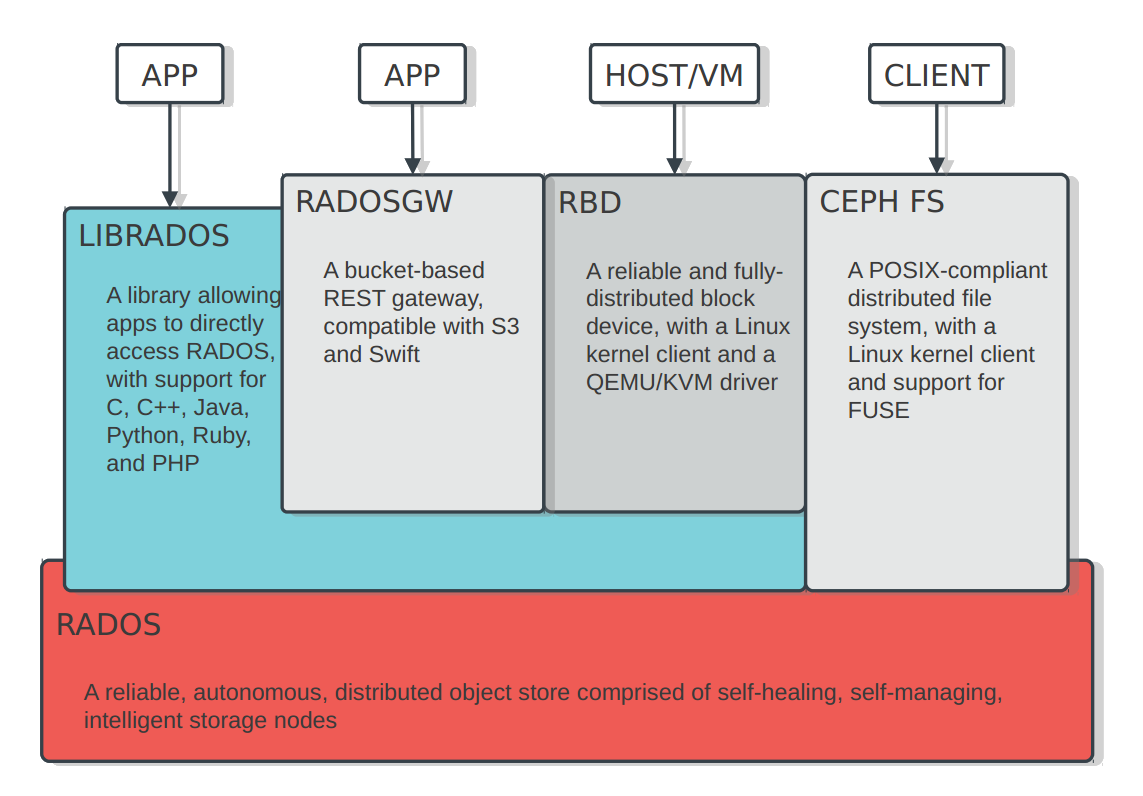
Ceph Architecture
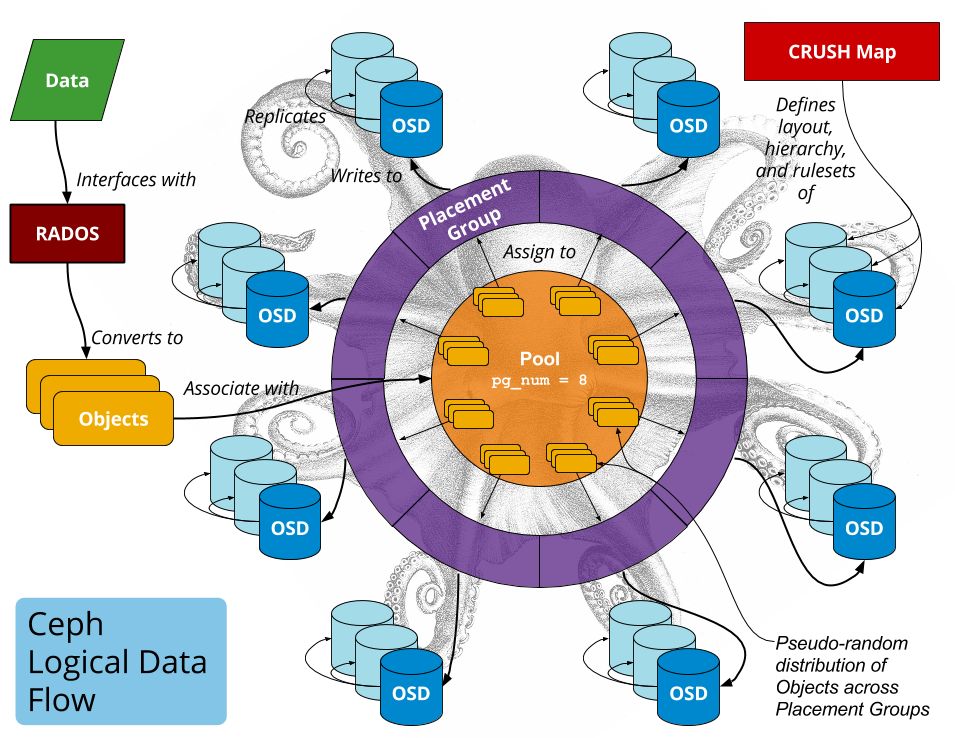
Gluster Use Case: Client File Services in AWS
Challenge
-
Isolated customers for web portal SaaS
-
POSIX filesystem requirement
-
Efficient elastic provisioning of EBS
-
2PB provisioned; only 20% utilized
-
-
Two backup tiers
-
Self-service & Disaster recovery
-
-
Flexibility to scale up and out on-demand
Implementation
-
Lorem ipsum
Diagram
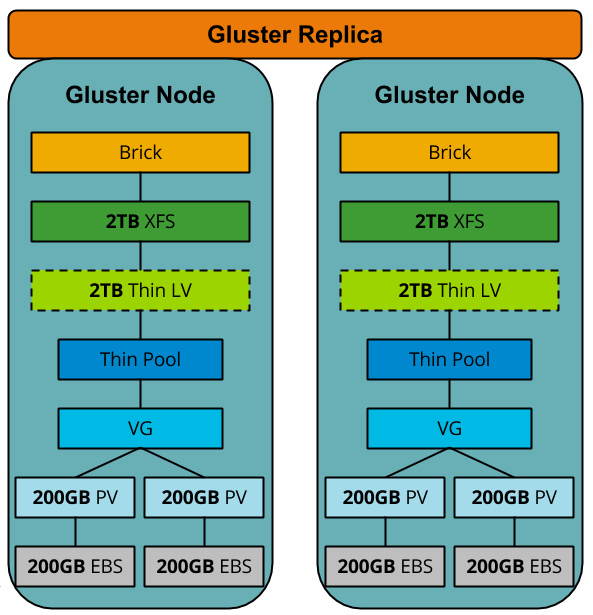
Gluster Use Case: Media Object Storage
Challenge
-
Media file storage for customer-facing app
-
Drop-in replacement for legacy object backend
-
1PB plus 1TB/day growth rate
-
Minimal resistance to increasing scale
-
Multi-protocol capable for future services
-
Fast transactions for fingerprinting and transcoding
Implementation
-
12 Dell R710 nodes + MD1000/1200 DAS
-
Growth of 6 → 10 → 12 nodes
-
-
~1PB in total after RAID 6
-
GlusterFS Swift interface from OpenStack
-
Built-in file+object simultaneous access
-
Multi-GBit network with segregated backend
Diagram
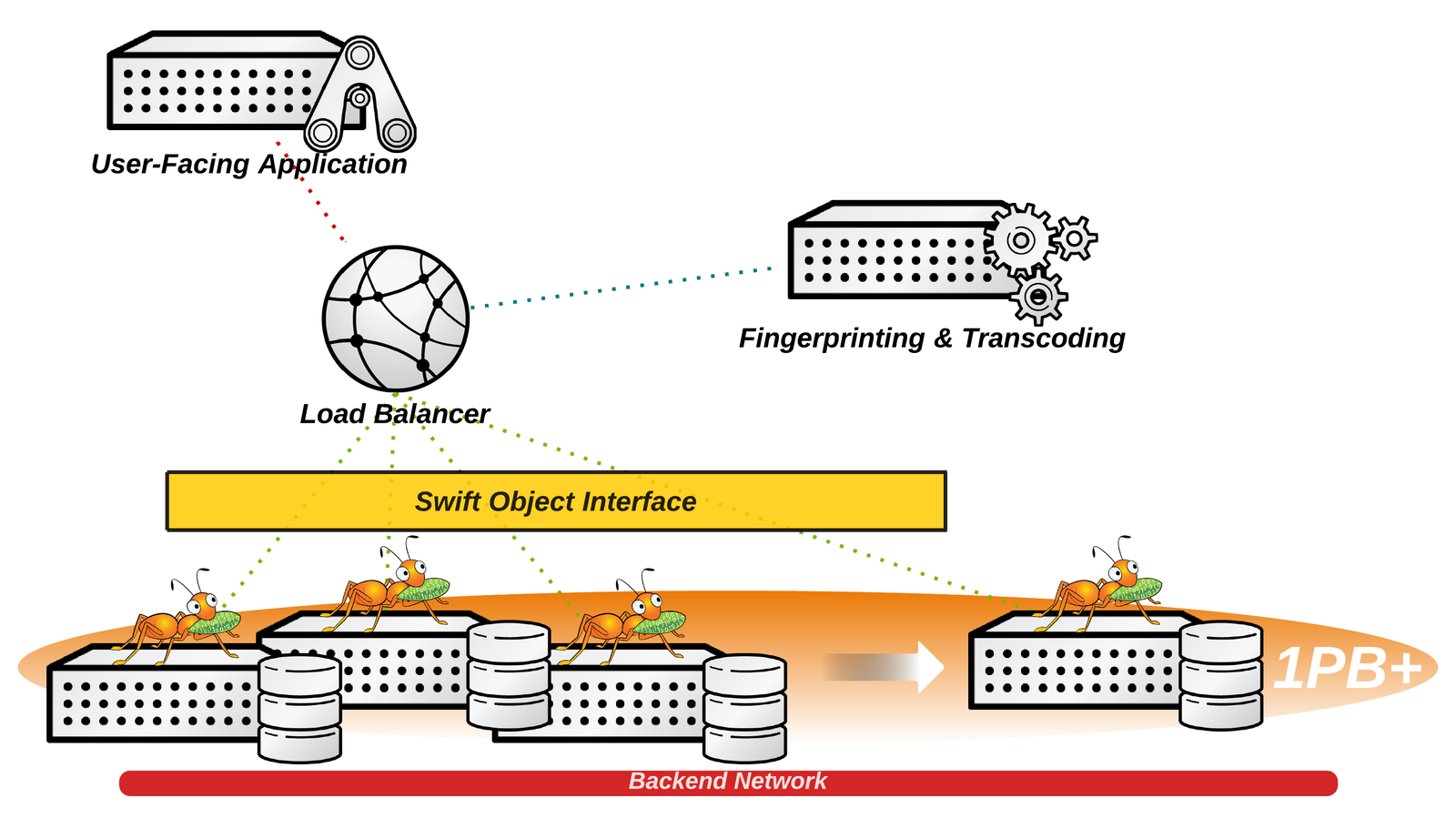
Gluster Use Case: Self-Service with Chargeback
Challenge
-
Add file storage provisioning to existing self-service virtualization environment
-
Automate the administrative tasks
-
-
Multi-tenancy
-
Subdivide and limit usage by corporate divisions and departments
-
Allow for over-provisioning
-
Create a charge-back model
-
-
Simple and transparent scaling
Implementation
-
Dell R510 nodes with local disk
-
~30TB per node as one XFS filesystem
-
Bricks are subdirectories of the parent filesystem
-
Volumes are therefore naturally over-provisioned
-
-
Quotas placed on volumes to limit usage and provide for accounting and charge-back
-
Only 4 gluster commands needed to allocate and limit a new volume; Easily automated
Diagram
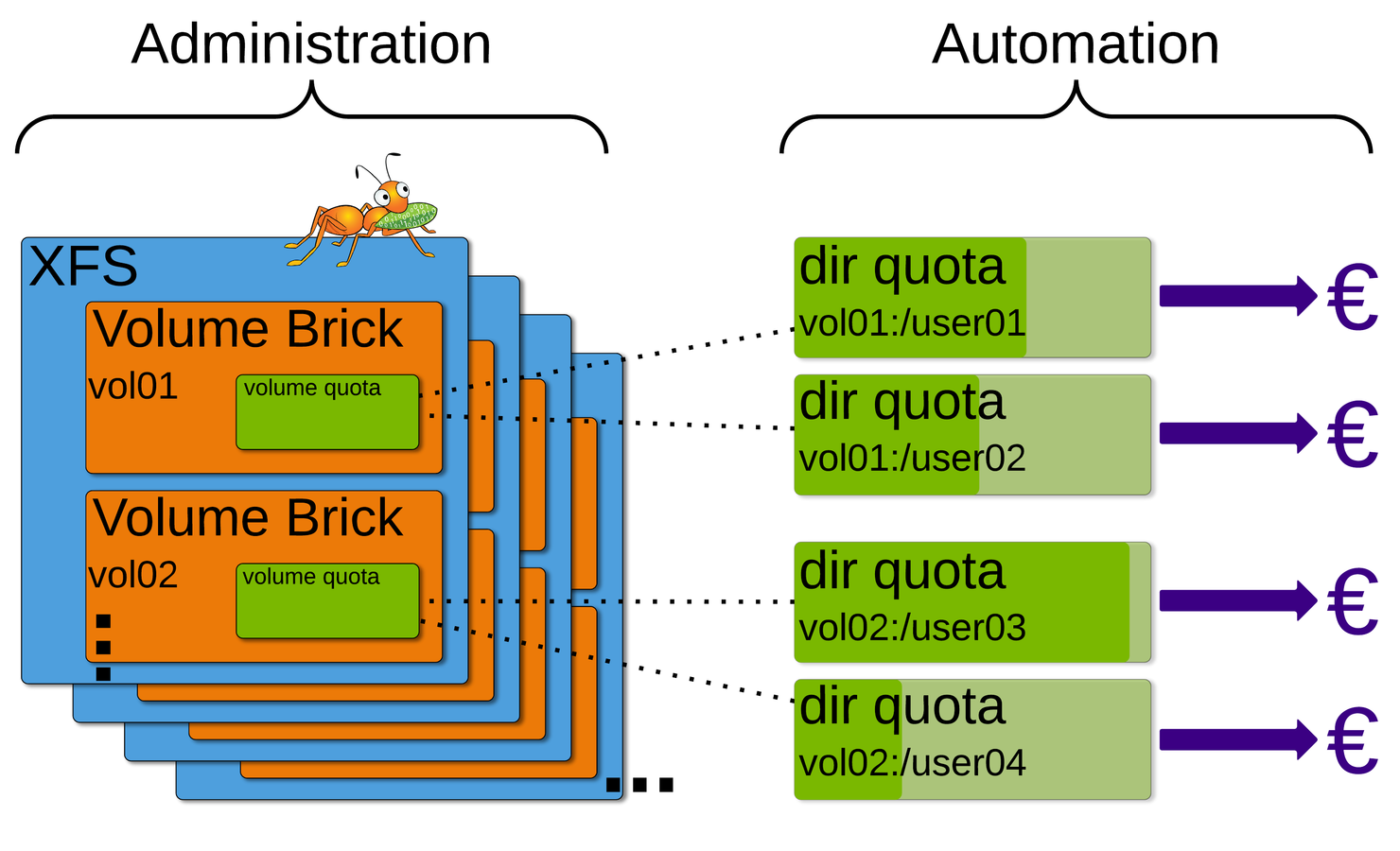
Gluster Use Case: NoSQL Backend with SLA-Bound Geo-Replication
Challenge
-
Replace legacy database key/blob architecture
-
Divide and conquer
-
NoSQL layer for key/pointer
-
Scalable storage layer for blob payload
-
-
Active/Active sites with 30-minute replication SLA
-
Performance tuned for small-file WORM patterns
Implementation
-
HP DL170e nodes with local disk
-
~4TB per node
-
Cassandra replicated NoSQL layer for key/pointer
-
GlusterFS parallel geo-replication for data payload site copy exceeding SLA standards
-
Worked with Red Hat Engineering to modify application data patterns for better small-file performance
Diagram

Ceph Use Case: Storage & Compute Consolidation for Scientific Research
Challenge
-
Scale with storage needs
-
Eliminate need to move data between backends
-
Keep pace with exponential demand
-
-
Reduce administrative overhead; Spend more time on the science
-
Control and predict costs
-
Scale on demand
-
Simple chargeback model
-
-
Efficient resource consumption
Implementation
-
Dell PowerEdge R720 Servers
-
OpenStack + Ceph
-
HPC and Storage on the same commodity hardware
-
Simple scaling, portability, and tracking for chargeback and expansion
-
-
400TB virtual storage pool
-
Ample unified storage on a flexible platform reduces administrative overhead
-
Diagram
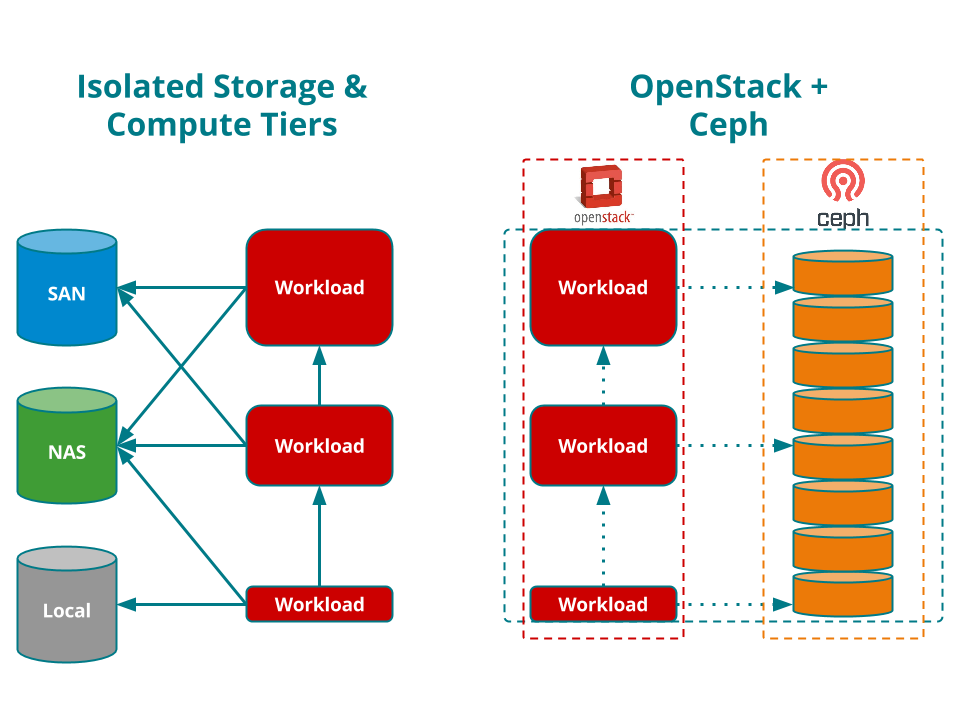
Ceph Use Case: Multi-Petabyte Restful Object Store
Challenge
-
Object-based storage for thousands of cloud service customers
-
Seamlessly serve large media & backup files as well smaller payloads
-
Quick time-to-market and pain-free scalability
-
Highly cost-efficient with minimal proprietary reliance
-
Standards-based for simplified hybrid cloud deployments
Implementation
-
Modular server-rack-row "pod" system
-
6x Dell PowerEdge R515 servers per rack
-
10x 3TB disks per server; Total 216TB raw per rack
-
10x racks per row; Total 2.1PB raw per row
-
700TB triple-replicated customer objects
-
-
Leaf-Spine mesh network for scale-out without bottleneck
-
-
Ceph with RADOS Gateway
-
S3 & Swift access via RESTful APIs
-
Tiered storage pools for metadata, objects, and logs
-
-
Optimized Chef recipes for fast modular scaling
Questions?
Do it!
-
Build a test environment in VMs in just minutes!
-
Get the bits:
-
Fedora 23 has GlusterFS and Ceph packages natively
-
RHSS 3.1 ISO available on the Red Hat Portal
-
-
Go upstream: gluster.org / ceph.com
Thank You!
@RedHatOpen @Gluster @Ceph @dustinlblack #RedHat


